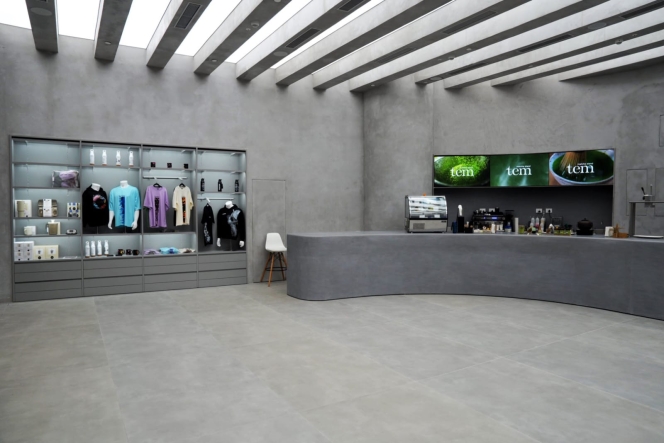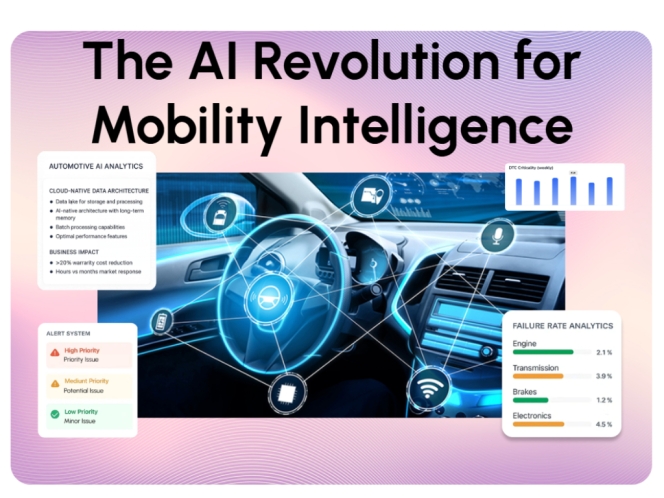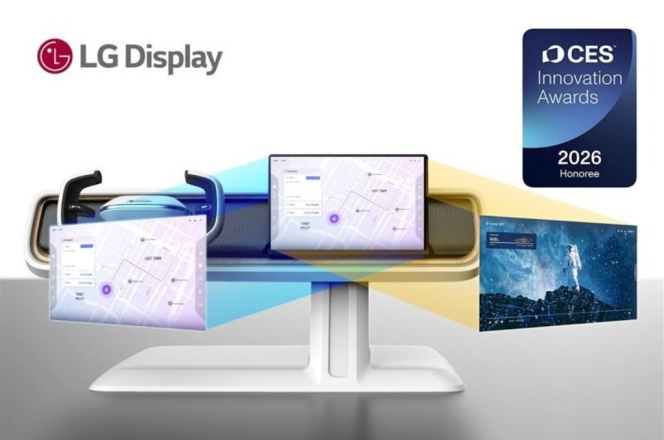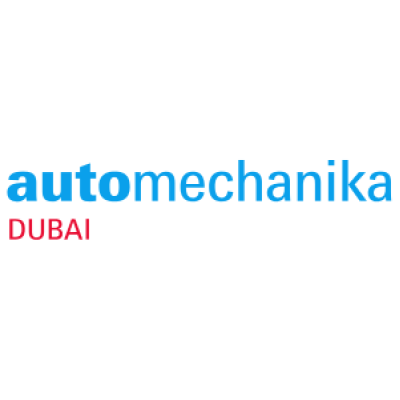Automotive Components Industry in India Focuses On Value Addition And Greater Agility
- By Gaurav Nandi
- January 12, 2024

In line with the government's push to make India a key automotive manufacturing hub, the automotive components industry in India is confident that it will export more in 2024.
Focusing on providing more and more opportunities to Indian auto components manufacturers in terms of exports, the Automotive Components Manufacturers’ Association (ACMA) has been helping them to participate in major auto shows the world over. It is also conducting B2B trade fairs such as iAutoConnect which took place in November 2023 in New Delhi, to ensure good international exposure.
Clocking a 12.6 percent Y-o-Y growth in the first two quarters (H1) of FY2024, the Indian auto components industry, informed an ACMA source, is riding on a robust domestic demand as well as concentrating on exports to ensure stronger and sustainable growth.
Reporting sales worth USD 36.1 billion in H1 FY2024 as against sales worth USD 33.9 billion during the same period last financial year, the source mentioned that auto component manufacturers are paying attention to significant value addition by adopting new technologies and bettering their agility to respond to the market requirements in the international as well as the home markets.
Speaking at a press event in Delhi recently, ACMA President Shradha Suri Marwah averred that the auto component industry is mulling over investing around USD 7 billion over the next five years on capacity expansion and technology upgradation mainly because of the robust demand within the indigenous automobile industry,
"The components industry continues to make investments for purposes of higher value-addition, technology upgradation, and localisation to stay relevant to both domestic and international customers. The industry is aiming to invest USD 6.5-7 billion in capex over the next five years as compared to USD 3.5-4 billion spent in the last five years. With good performance in sales across segments of the vehicle industry in the festive season, I am optimistic that the current fiscal year will witness another good performance from the auto components sector," Marwah noted.
Speaking on the growth, she iterated, “As vehicles sales started reaching pre-pandemic levels and supply-chain issues witnessed during the pandemic such as availability of semi-conductors, high input raw-material costs and non-availability of containers were mitigated, the auto components sector witnessed a steady growth in both domestic and the international markets in the first-half of FY2023-24.”
The findings of the apex body indicated that the auto component sales to OEMs in the domestic market stood at USD 30.8 billion registering a growth by 13.9 percent compared to the first half of the previous year. Consumption of increased value-added components and the shift in market preference towards larger and more powerful vehicles continued to contribute to the increased turnover of the auto-components sector.
Moreover, exports of auto components grew by 2.7 percent to USD 10.4 billion in H1 FY2024 from USD 10.1 billion in H1 FY2023. North America and Europe accounted for 33 percent of exports witnessing an increase of 2 and 12 percent respectively, while Asia accounted for 24 percent, witnessed a decline of 4 percent.
The imports grew by 3.6 percent from USD 10.2 billion in H1 FY202-23 to USD 10.6 billion in H1 FY2023-24. Asia accounted for 63 percent of imports followed by Europe and North America, with 27 percent and 9 percent respectively. Imports from Asia grew by 2 percent, from Europe by 8 percent and from North America by 2.5 percent.
The aftermarket also registered a modest growth in H1 FY2024 witnessing sales go up by 7.5 per cent to USD 5.5 billion from USD 5.4 billion in H1 FY2023.
Commenting on the performance of the auto component industry in India, ACMA Director General, Vinnie Mehta, said, “With vehicle sales and exports displaying steady performance, the auto component industry demonstrated a growth of 12.6 percent scaling a turnover of Rs. USD 36.1 billion in the first half of FY 2023-24.
Auto Component supplies to all segments of the industry i.e., to OEMs, exports and also the aftermarket remained steadfast. Exports grew by 2.7 percent to USD 10.4 billion while imports grew by 3.6 percent to USD 10.6 billion. The aftermarket, estimated also witnessed a growth of 7.5 percent. Component sales to OEMs in the domestic market grew by 13.9 percent to Rs.2.54 lakh crore”.
Elaborating on the mood of the industry and outlook for the near to mid-term future, Shradha mentioned, “Going forward, considering the festive season has gone well with significant sales across most segments of the vehicle industry, I am optimistic that the current fiscal year will witness another good performance from the auto components sector. The components industry continues to make investments for purposes of higher value-addition, technology upgradation, and localisation to stay relevant to both domestic and international customers.”
*Image for representative purpose only.
MapmyIndia And Zoho Announce Integration For CRM Users
- By MT Bureau
- November 26, 2025

MapmyIndia Mappls, a digital mapping and geospatial technology company, and Zoho, a technology company, have announced a collaboration to integrate two MapmyIndia features directly within Zoho CRM. The features being integrated are Address Capture and Nearby Lead Finder.
The integration allows Zoho CRM users to: capture verified addresses, visualise customer locations, discover potential leads in nearby areas and optimise sales routes. These functions are powered by MapmyIndia’s mapping platform.
Rakesh Verma, Co-Founder, Managing Director & Group Chairman, MapmyIndia Mappls, said, “This partnership between MapmyIndia and Zoho is a true blue Swadeshi celebration – two Indian innovators and leaders in their respective fields - coming together to deliver cutting-edge, homegrown technology that is world-class. MapmyIndia Mappls Address Capture and Nearby Lead Finder capabilities will help Zoho CRM users across India to work smarter and sell better, while keeping all data and innovation safe within India. I am confident that this partnership will boost collaborations amongst Indian tech companies creating a sympathetic ecosystem towards the realisation of an Atmanirbhar, Viksit Bharat.”
Mani Vembu, CEO, Zoho, said, "At Zoho, we believe that true technological progress begins with self-reliance. Building deep-tech R&D from India has always been one of our foundational pursuits, driven by the immense talent and creativity that thrive in the country. Our partnership with MapmyIndia embodies this vision, uniting homegrown expertise in business software and digital mapping to deliver solutions that are powerful, privacy-focused and proudly indigenous. This integration empowers Indian businesses by combining business intelligence with spatial intelligence, giving field teams the location-aware insights they need to better serve their customers."
Toyota Kirloskar Motor Opens Experiential Museum In Bengaluru
- By MT Bureau
- November 24, 2025

Toyota Kirloskar Motor (TKM) has unveiled the Toyota Experiential Museum (TEM) in Bengaluru, which it said is a new cultural and lifestyle hub for the company. The space combines Indian philosophy with Japanese culture and technology.
Located on the ground floor of the Phoenix Mall of Asia, TEM is spread across 8,200 sq ft and offers a five-senses experience, blending Japanese minimalism with Indian warmth through visuals, sounds, scents, textures and flavours.
Tadashi Asazuma, Deputy Managing Director, Toyota Kirloskar Motor, said, “At Toyota, our vision of creating ‘Happier Paths Together’ goes beyond mobility – it is about inspiring experiences that connect people, cultures, and emotions. With TEM, we hope to offer a truly unique experience that embodies this spirit.
In India, we found inspiration in the practice of Sadhana – the mindful pursuit of inner balance and fulfilment. TEM is where the Japanese culture and values of precision, serenity, and respect for nature beautifully align with the spirit of Sadhana, making TEM a meaningful blend of both. Designed to engage the senses and spark reflection, it brings together art, technology, and craftsmanship to inspire mindfulness, especially amongst the youth.”
The museum features minimalist interiors and distinct aesthetics designed to spark curiosity, inviting guests to explore at their own pace. The journey begins with a mirrored and rhythmic experience of the changing seasons common to Japan and India, unfolding through infinite projections of light, colour and motion. It then rises into a celebration of shared passion, featuring an audio-visual collaboration with DRUM TAO. A display includes a water curtain encircling a car draped in satin.
A design cafe offers a range of merchandise blending heritage with contemporary lifestyle, celebrating simplicity and craftsmanship.
The TEM cafe features a curated menu that blends the Japanese tradition of matcha with Indian flavours. Highlights include the India-inspired mango infusion.
- Maruti Suzuki India
- Maruti Suzuki Innovation Fund
- Ravity Software Solutions
- Sociograph Solutions
- Amlgo Labs
- Hisashi Takeuchi
- Vikas Rungta
Maruti Suzuki India Invests INR 20 Million In Ravity Software Solutions
- By MT Bureau
- November 21, 2025

Maruti Suzuki India (Maruti Suzuki) has announced an investment of nearly INR 20 million to pick up 7.84 percent stake in Bengaluru-based mobility insights start-up Ravity Software Solutions. The start-up claimed to be a global platform for AI-driven connected mobility intelligence, which transforms vehicle data into business value.
This marks the automaker’s third such move through ‘Maruti Suzuki Innovation Fund’, which makes strategic investments in innovative and high-potential start-ups that can support Maruti Suzuki India’s operations.
The company made its first investment of INR 20 million in Sociograph Solutions in June 2022, followed by the same amount in Amlgo Labs in March 2024.
Hisashi Takeuchi, Managing Director & CEO, Maruti Suzuki India, said, “Aligning to our core value of keeping customer at the core of our business, we are focused on enhancing vehicle ownership experience. In the age of open innovation, we strive to co-create business solutions with specialized entities operating in the particular field. Startups are ideal partners as they bring agility, fresh thinking, and cutting-edge solutions, to support our goal of ensuring customer delight. Our investment in Ravity Software Solutions will enable us to elevate customer experience through data-driven insights. We have been associating with startups since 2019 under our Maruti Suzuki Innovation programs. Through this initiative, we are investing in a culture of innovation, building strategic partnerships, and unlocking new opportunities, in line with Government’s ‘Startup India’ initiative to promote entrepreneurship in the country.”
Vikas Rungta, Founder, Ravity Software Solutions, said, “It is an honour to be associated with an industry leader like Maruti Suzuki, whose name is synonymous with bringing personal mobility to millions in India as well as across the globe. An automobile major like Maruti Suzuki partnering with a startup speaks volumes about its forward-thinking mindset, humility, and openness to learn and collaborate to explore new ideas. With our excellence and expertise in AI, analytics and mobility, we are committed to upholding the trust Maruti Suzuki has placed in us. We believe that the high complementarity of our strengths: Maruti Suzuki’s scale of business and our agility and entrepreneurship, will further enhance customer experience and delight.”
LG Display Wins Two CES 2026 Innovation Awards For Automotive Display Technology
- By MT Bureau
- November 21, 2025

LG Display has secured two CES 2026 Innovation Awards from the Consumer Technology Association (CTA) for two automotive display innovations: Dual View OLED and Under Display Camera-infrared (UDC-IR) OLED.
Both products were honoured in the In-Vehicle Entertainment category for delivering space efficiency, superior picture quality and high standards of safety.
The Dual View OLED solution allows a single automotive display to show different content based on the viewing position. For example, the driver can view navigation while the front passenger streams content. Optimised pixel structure ensures the driver’s touch operation does not interfere with the passenger’s entertainment. The product utilises a Tandem OLED device structure for picture quality and operates reliably in environments ranging from -40deg C to 85deg C.
The UDC-IR OLED jointly developed with LG Innotek, is claimed to world’s first full-screen automotive display to conceal an in-screen driver-monitoring camera. LG Display developed advanced algorithms that make the camera hole invisible from the driver’s viewpoint. The camera integrates LG Innotek’s high-resolution IR camera and image-enhancement software to ensure accurate driver monitoring, which is becoming mandatory due to global safety regulations.
LG Display will showcase these solutions at a dedicated booth at CES 2026. The company has consistently won CES Innovation Awards, previously honoured for its Thin Actuator Sound Solution (CES 2023) and its 57-inch Pillar-to-Pillar LCD (CES 2024).






Comments (0)
ADD COMMENT